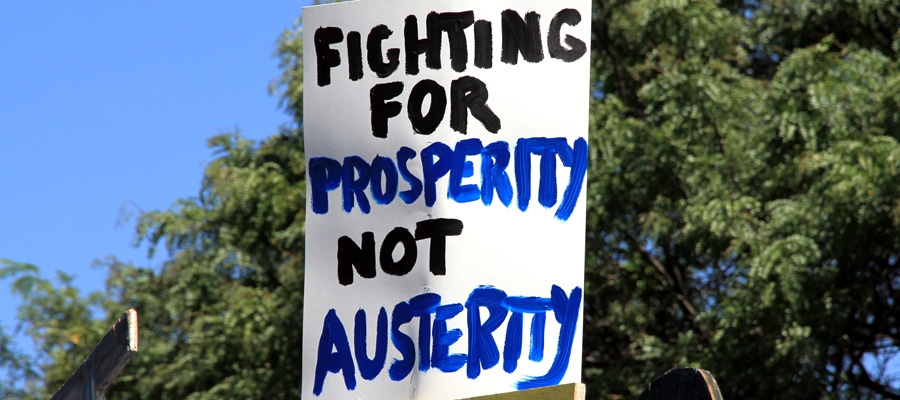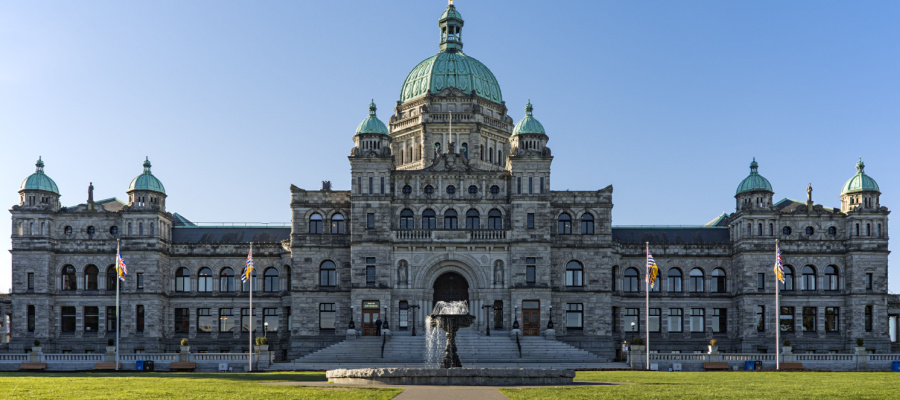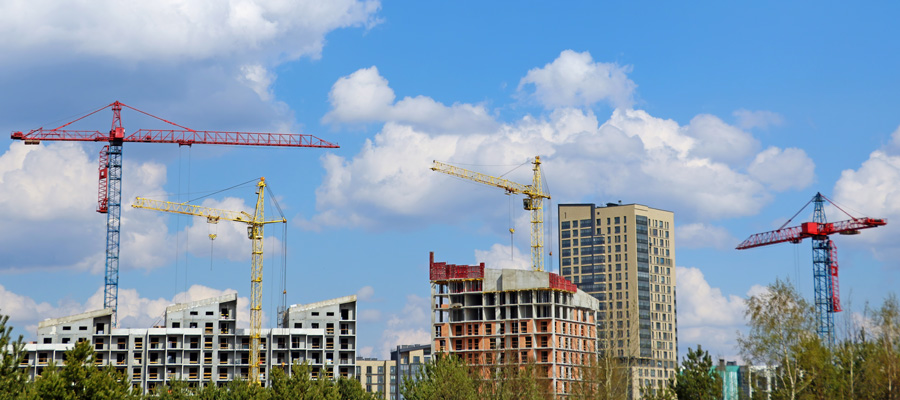Massive public investment, not austerity, is the answer

A depression is still around the corner if the Canadian government does not continue to radically intervene in the economy.
We have all encountered the dark outlines of the crisis facing us by now. Everywhere there are warnings of mass unemployment unseen in decades, already vulnerable workers—young, racialized, women—hit hardest, entire industries at risk, a looming wave of evictions and foreclosures.
None of this is inevitable. That is the message we should be encountering more often.
Instead, we still too frequently hear warnings about deficits and debt, about excessive generosity today and bills coming due tomorrow. A durable, just reconstruction of the economy, one that protects health as the foundation for having any economy, will require more from the public sector: more investment, more jobs, more government debt. In fact, it will also require big qualitative shifts, changes to how we do things: more collective goods, more worker rights, more public ownership. Working people cannot be made to pay for the crisis; instead their needs must be at the centre of economic transformation.
Canada’s federal government is already projecting a deficit one seventh the size of the economy. That is for the good. The forecast of $343 billion in spending over and above revenues is a nice example of basic accounting: somebody’s deficit is somebody else’s surplus. Without the massive federal deficit, we would have seen massive household deficits as jobless Canadians burned through savings and took on debt to cover food and rent. Government rightly took on debt just to keep people afloat, avoiding for now the deadly trio of catastrophic personal debts, a raging pandemic and economic depression.
A durable, just reconstruction of the economy, one that protects health as the foundation for having any economy, will require more from the public sector: more investment, more jobs, more government debt.
Collectively we did what no one of us could do individually. This deficit is what allowed so many of us to stay home while still paying for necessities like food and at least some of the bills. It reminded us that the collective is important after decades of its denigration. Even UK Prime Minister Boris Johnson had to reverse the dictum of Margaret Thatcher, his Conservative predecessor and free market fan, stating, “There is such a thing as society.” What a surprise!
Today’s rapid increase in public spending and public debt should likewise not come as a surprise. Neither is it unprecedented. World War II precipitated similarly lopsided and necessary growth on the spending side of the public balance sheet. Without precedent is that even with today’s deficit, the government’s interest payments on its debt are set to be among the lowest in history as a percentage of GDP. The bond market is unconcerned, absorbing every I.O.U. the government prints, while interest rates are effectively at zero and inflation is not rising. Rates are so low that once even today’s minimal inflation is factored in, they are actually negative, meaning bondholders are ready to lose money loaning to the federal government—a bargain we should take them up on.
The question for the Canadian government (and others) will soon be whether it has the nerve to continue investing in a real reconstruction, taking on more debt to avoid a depression in the aftermath of the acute phase of the pandemic and taxing the rich to redistribute resources and power. Free markets will not get us out of this mess.
Working people cannot be made to pay for the crisis; instead their needs must be at the centre of economic transformation.
The Bank of Canada, not normally a hotbed of radical thought, is effectively laying the ground for the government to go further. In its latest Monetary Policy Report, the Bank first says that the Canadian economy will be constrained by demand rather than supply. In the dry language of economists this means that the bigger risk is people not be spending enough rather than firms not producing enough. Of course, as people don’t spend, firms adjust, scale down production and lay off some workers, who then spend even less and a vicious recessionary cycle is born.
Canada’s central bankers don’t harbour naive hopes for a quick, “V-shaped” recovery dreamt by some in the business press and among the right. They see a long “swoosh” at best, taking years just to get back to where we were in 2019.
Second, and more shocking, our central bankers also project that the economy will not return to its pre-crisis growth path in the foreseeable future. That is this pandemic, far from being a blip where we “turn off” large parts of the economy only to restart them again, will instead cause permanent damage. Together with a persistent lack of demand this is reason for more and longer lasting public stimulus—a reconstruction, not just a recovery.
Free markets will not get us out of this mess.
Even businesses agree, with those participating in a Bank of Canada survey predicting that 10 percent of economy-wide spending will simply not return. This is a very good argument for a Green New Deal of public investment and public consumption to both directly meet critical environmental and social challenges, and prevent a downward economic spiral. Think not only green energy, but investment into green public housing and universal childcare. The radical is now also practical.
Of course, big business will be lining up to demand that public dollars flow directly into their own pockets. They will argue that government can’t get things right; what they really mean is that they don’t want to miss out on guaranteed profits. Their version of public investment is one where services are contracted out, any gains are privatized and risk to them is entirely neutralized. This is why it’s important that the recovery be oriented to publicly-owned investments, good public jobs and direct income supports to people, rather than massive corporate welfare. Just as we cannot go back to another round of austerity, we cannot allow business to drive a privatized Keynesianism.
Our economy is ripe for transformative reconstruction. The key now will be both how much we spend and, crucially, how we spend it. First, we must ensure everyone can meet basic needs. Income supports, including CERB, cannot be cut off before the pandemic ends, and an overhauled unemployment insurance (EI) system is also urgently needed, one that covers all jobless Canadians and replaces more lost income. At the same time, sharply increasing public investment not dependent on the private market should be an immediate priority, starting with big expansions of healthcare, child care and public housing.
Just as we cannot go back to another round of austerity, we cannot allow business to drive a privatized Keynesianism.
Women have been hit harder by this crisis in multiple ways—both losing more jobs and taking on more work in the home. We need a national childcare program with good jobs at its centre to both respond to the gendered nature of the crisis and start to revalue care work.
To prevent a lost generation among today’s youth who are also disproportionately affected, the government should launch a big public green jobs program with fair wages, training and union representation. Think how much introducing a generation of young workers to unions in their first job could do for reviving the labour movement—a movement that could then help ensure the recovery from this crisis isn’t as unequal as from the last one.
If we fail to do these things and more, it will be a choice, not because we could not afford it. The COVID-19 pandemic is largely an act of chance, but an economic depression on its heels would be largely of our own making.
Topics: COVID-19, Economy, Poverty, inequality & welfare, Provincial budget & finance


